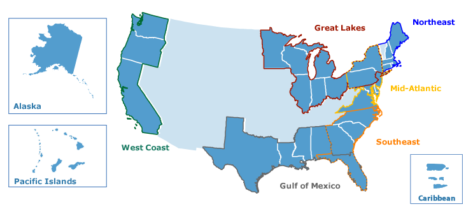Little-known effort puts Northeast fishermen at risk under the National Ocean Policy
In my 50-plus years as a member of the New England fishing community, I have witnessed many threats to our survival as a result of regulatory overreach. However, there is one in particular that demands the attention of everyone concerned about maintaining a viable fishing industry in our region: the coastal and marine spatial planning (CMSP) effort under the National Ocean Policy.
Haven’t heard of it? Believe me, you’re not alone.
Just like catch shares, this initiative has been implemented around rather than through Congress, its genesis being a presidential executive order issued in 2010 that led to the chartering of a government-only Northeast Regional Planning Body (RPB) and a National Ocean Council charged with overseeing it and other RPBs around the country. The RPB’s task: Develop a coastal and marine spatial plan for waters spanning from Connecticut to Maine. Now, in a rush to complete a plan for the Northeast before the end of 2016, the RPB is set to release a draft plan that federal agencies will be bound to implement when final.
I have been engaged in the RPB’s activities since its earliest days, and have become increasingly troubled about the potential for negative impacts to result from this process and plan. Those concerns were heightened at the outset at the RPB’s second meeting, when one RPB member remarked that “what we do is going to be painful to a whole lot of people…”
Let there be no mistake, the implications for fishing activity in the region are significant. Moreover, while there is representation from the New England Fishery Management Council on the RPB, neither active fishermen nor their representatives are afforded an official place in these negotiations! Any comments or concerns from our industry are treated as anecdotal remarks or observations to the issues at hand.
Among other things, the plan will require federal agencies to use products including new maps being developed that identify “core areas” and “hotspots” in their regulatory activities, with the identification of “important ecological areas” expected to be considered after the plan is adopted. Good luck if you have been trying to find those maps to review them, though. With a draft plan set for release on May 25, the RPB has still not made them available.
Furthermore, a recent RPB document noted the plan will be used in pre-application reviews, stating that agencies and project applicants should use the plan “as a primary initial source” to inform project review. The RPB’s federal co-lead also stated in November that NOAA could use the plan to conduct essential fish habitat consultations.
In addition, the RPB has proposed using the plan to influence the use of information related to ocean management activities, including activities carried out under the Magnuson-Stevens Act. That leads to yet another important unresolved question.
How will this plan interact with fishery management plans? The executive order requires federal agencies to implement the coastal and marine spatial plan to the maximum extent, including through regulations if necessary. If any part of the implementation of this plan is determined to be inconsistent with the New England fishery management plan, it seems clear that NOAA would have no choice but to take action to bring the legislatively-authorized fishery management plan into conformance with this unauthorized product.
What compounds all of these headaches is the fact that, at this late date, so many remain unaware that this initiative is even underway, and with good reason.
The New England fishing community must already deal with a multitude of regulatory agencies and processes that impact our ability to make a living, raise our families, and support our communities. It is unfortunate that this new layer of red tape and potential tool for new restrictions on our industry has been foisted upon us. That is why fishermen and others whose livelihoods depend on access to our waters must, individually and through our organizations, weigh in now with Congress and the RPB with this simple message: We did not ask for this, we do not need it, nor have we been able to be an official part of it!
Jim Kendall
New Bedford Seafood Consulting







Leave a Reply